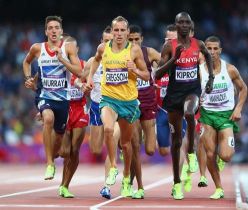Kettunen JA, Kujala UM, Kaprio J, Bäckmand H, Peltonen M, Eriksson JG, Sarna S.
AIM: To investigate life expectancy and mortality among former elite athletes and controls.
METHODS: HR analysis of cause-specific deaths sourced from the national death registry for former Finnish male endurance, team and power sports athletes (N=2363) and controls (N=1657). The median follow-up time was 50 years.
RESULTS: Median life expectancy was higher in the endurance (79.1 years, 95% CI 76.6 to 80.6) and team (78.8, 78.1 to 79.8) sports athletes than in controls (72.9, 71.8 to 74.3). Compared to controls, risk for total mortality adjusted for socioeconomic status and birth cohort was lower in the endurance ((HR 0.70, 95% CI 0.61 to 0.79)) and team (0.80, 0.72 to 0.89) sports athletes, and slightly lower in the power sports athletes (0.93, 0.85 to 1.03). HR for ischaemic heart disease mortality was lower in the endurance (0.68, 0.54 to 0.86) and team sports (0.73, 0.60 to 0.89) athletes. HR for stroke mortality was 0.52 (0.33 to 0.83) in the endurance and 0.59 (0.40 to 0.88) in the team sports athletes. Compared to controls, the risk for smoking- related cancer mortality was lower in the endurance (HR 0.20, 0.08 to 0.47) and power sports (0.40, 0.25 to 0.66) athletes. For dementia mortality, the power sports athletes, particularly boxers, had increased risk (HR 4.20, 2.30 to 7.81).
CONCLUSIONS: Elite athletes have 5–6 years additional life expectancy when compared to men who were healthy as young adults. Lower mortality for cardiovascular disease was in part due to lower rates of smoking, as tobacco-related cancer mortality was especially low.



